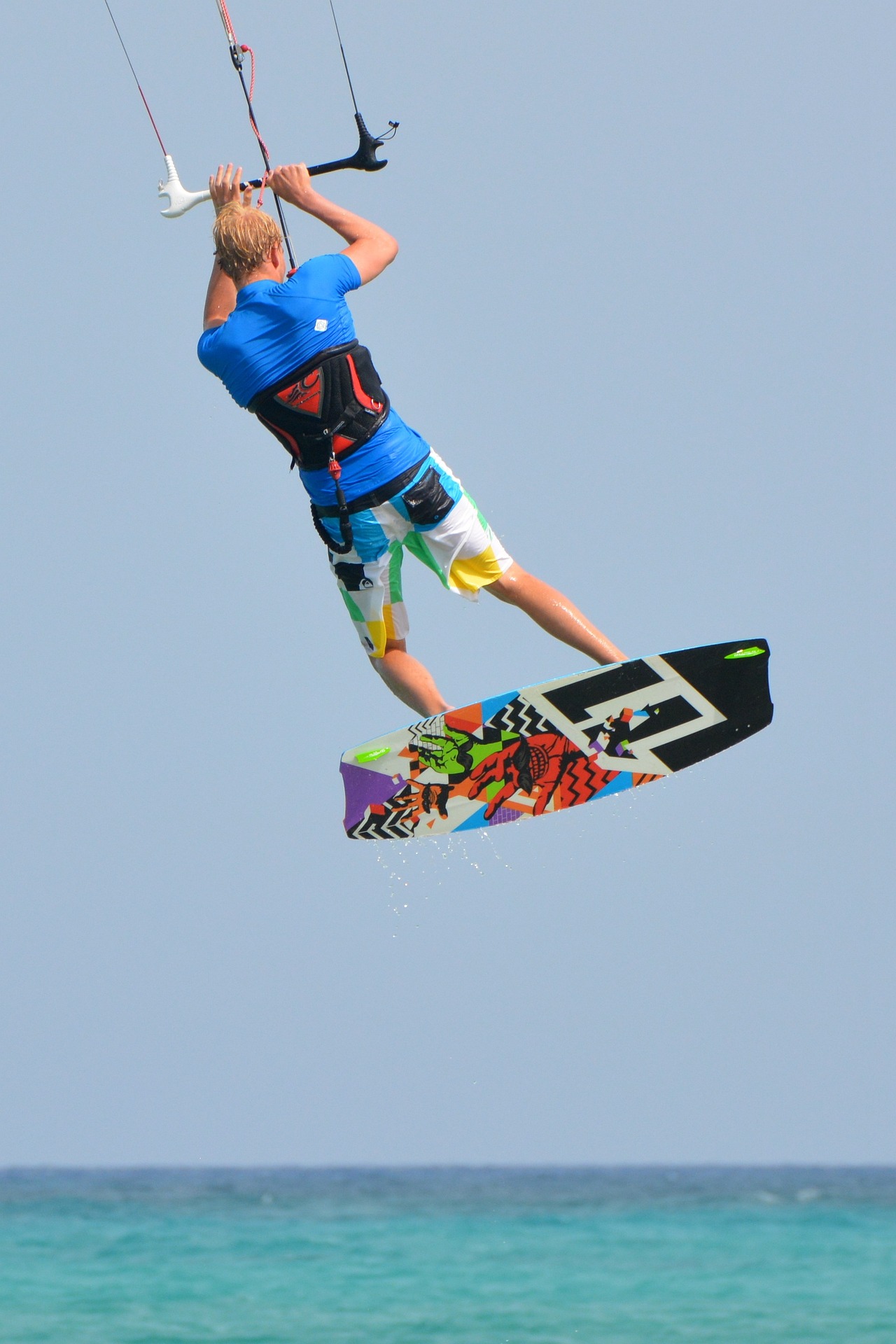Every year many kitesurfers are faced with the question: How do I find the right size for my kiteboard? Which kiteboard length do I need? What width should the kiteboard have? The choice is not so easy, especially for beginners, as various manufacturers offer kiteboards in lengths from 130 to 150 cm.
The kiteboard size is essential for a quick learning success and fun on the water.
This guide will help you to get an overview of the kiteboard market and find the perfect kiteboard for your needs. Step by step, the current kiteboard variants are explained here, so that you can find out more easily what the marketing terms are all about. For many kitesurfers it is simply too tedious to keep up to date with the latest kitesurfing equipment.
Which kiteboard size is right for me?
- Kiter Level Beginner
- Kiter Level Intermediate
- Kiter Level Advanced
- Kiter Weight heavy
- Kiter Weight light
- Speed
- Maneuvers
1. Kiteboard Sizes for Beginners
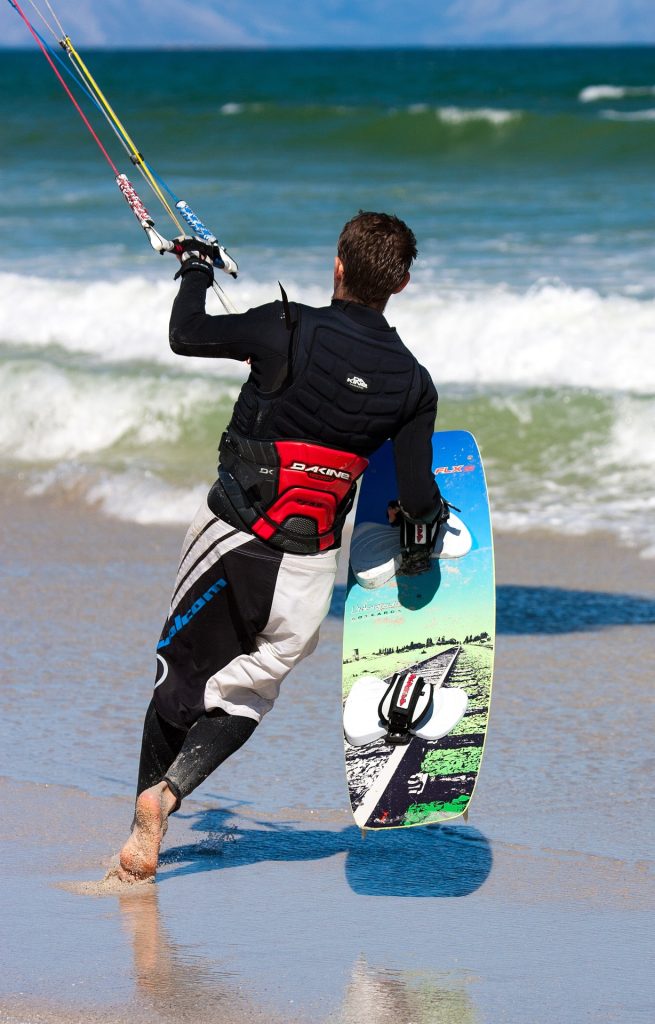
Beginners are recommended to have small sized kiteboards, which are good for learning the basics quickly. The longer the kiteboard, the better. Beginners kiteboard sizes are from 150 cm in length and 41 cm in width and higher. It is not meant to do fast moves, but for learning the basic kiteboarding principles. Beginner kiteboards provide more stability and control.
2. Kiteboard Sizes for Intermediate Kiters
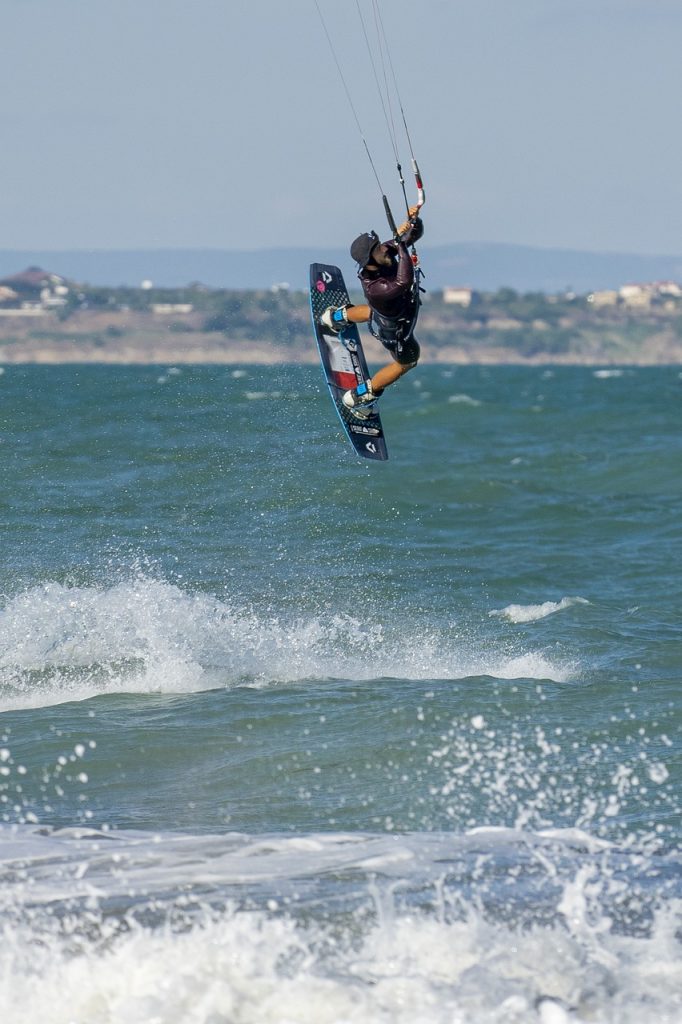
Intermediate kiters have already learned all the kiting definitions and basics and know how to fly a kite and use a kiteboard. Intermediate kiteboard sizes varies from 134 cm to 150 cm, it provides faster gliding since it has less projected area, the kiter’s weight also plays a vital rule in deciding the kiteboard size.
3. Kiteboard Sizes for Advanced Kiters
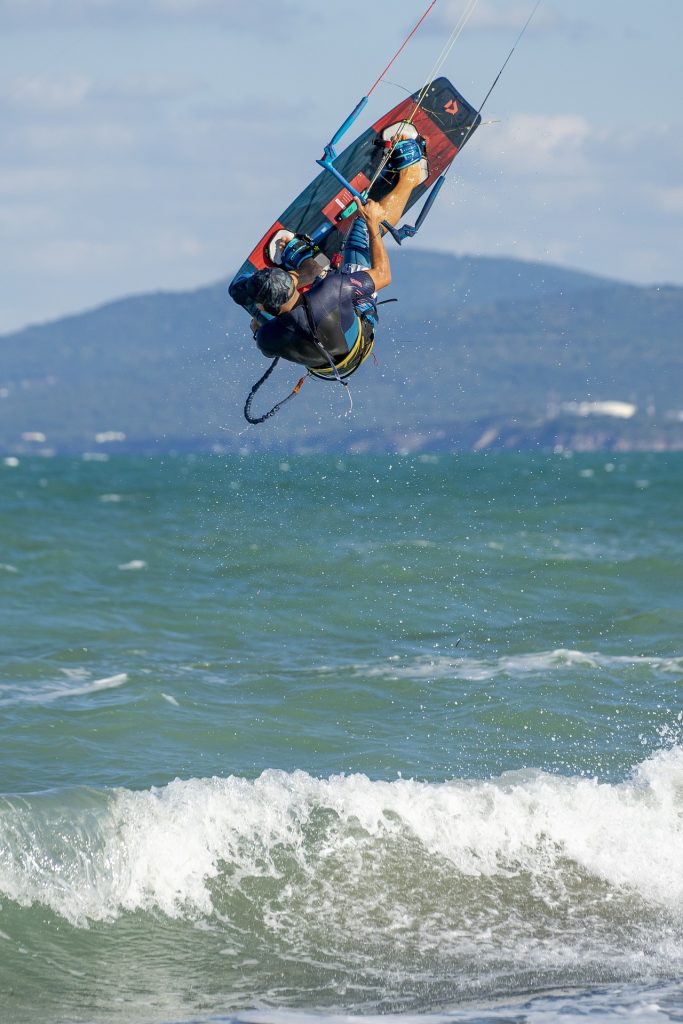
134 cm and smaller is perfect for those who look for advanced kiteboarding moves. It accelerate faster on water and it can be used for challenging other kiters.
Selecting a large size kiteboard for performing advanced moves is not appropriate and it won’t be done as smoothly as it would be with a small kiteboard.
4. Kiteboard Sizes for Light Weights

| Kitesurfer Weight | Kiteboard Length | Kiteboard Width |
| 40 kg | 130 cm | 38 cm |
| 45 kg | 131 cm | 39 cm |
| 50 kg | 132 cm | 40 cm |
| 55 kg | 133 cm | 41 cm |
Every kiter must know his body weight before selecting his kiteboard. The lighter the kiter weight the smaller the kiteboard size. If a kiter weight is 45 kg, his kiteboard should be 131 centimetre in length, and 38 centimetre in width.
Selecting the wrong kiteboard size would make kiteboarding harder and doing movements precisely would be a challenge.
5. Kiteboard Sizes for Other Weights
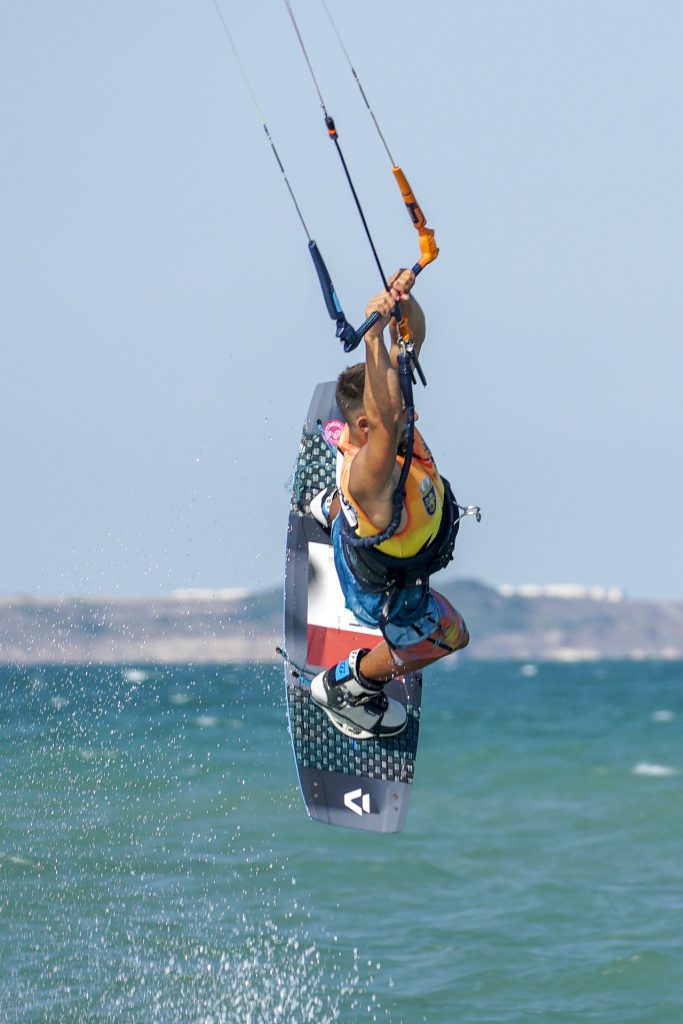
| Kitesurfer Weight | Kiteboard Length | Kiteboard Width |
| 60 kg | 134 cm | 42 cm |
| 65 kg | 135 cm | 43 cm |
| 70 kg | 136 cm | 44 cm |
| 75 kg | 137 cm | 45 cm |
The heavier the kiter, the larger the kiteboard should be. If a kiter has 70 kilogram of body weight, then his kiteboard should have 136 centimetre in length and 44 centimetre in width.
6. Kiteboard Sizes and Speed
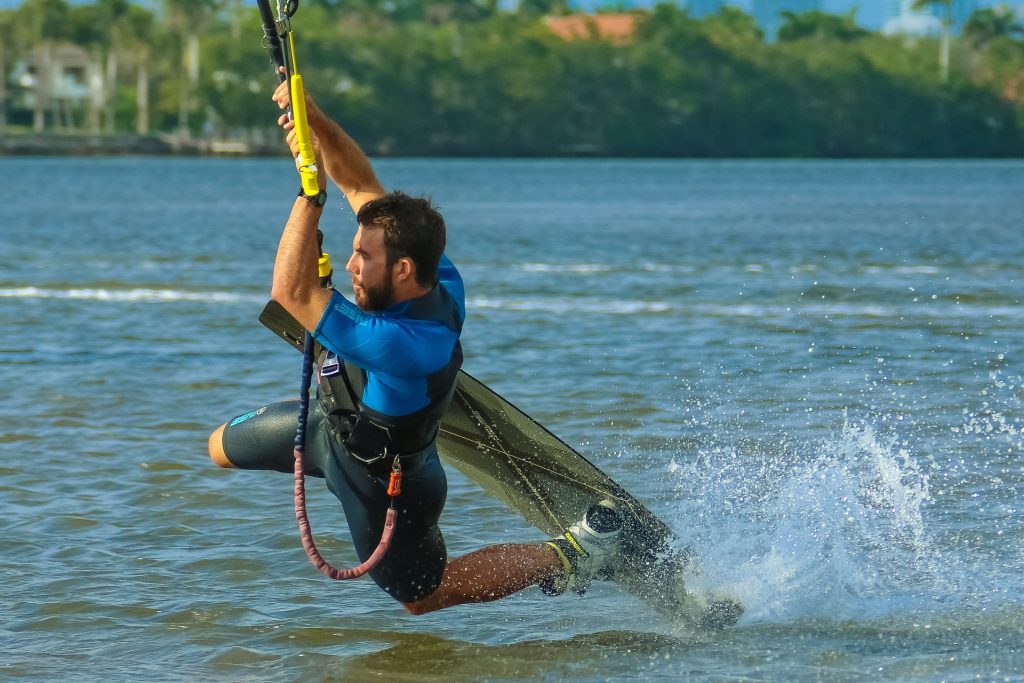
Small Kiteboards helps acheive higher speeds. The smaller the kiteboard is, the higher the speed the kiter can achieve.
Selecting a large kiteboard size would not be wise for kiteboarding challenges that are about speed. The kiter’s weight is also important to consider while selecting the right kiteboard size besides speed.
7. Kiteboard Sizes and Maneuvers
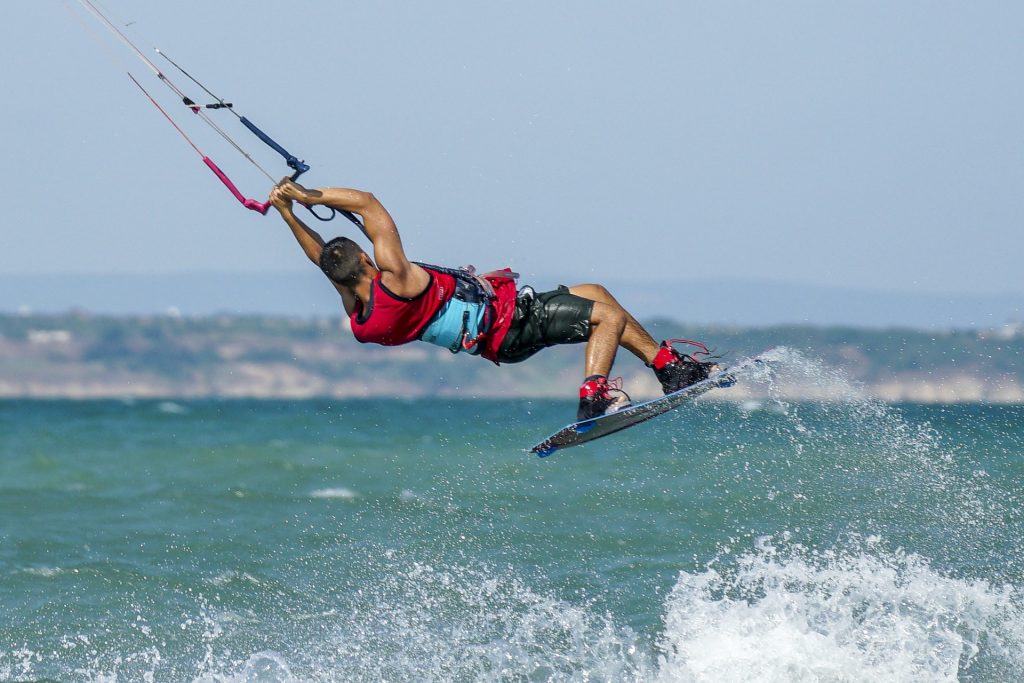
Smaller sized kiteboards are recommended for maneuvers and advanced moves because it is more dynamic. Choosing a large kiteboard would be a hurdle in the kiters way to upgrade his skills and doing professional moves.
Ideally, before buying a kite board, you should make a few notes about what you expect from a new kite board and how it should not feel. It is also helpful to know which kitesurfing discipline you prefer, in which territory you are mainly kiting, the prevailing wind conditions (wind: knots from/to) and your existing kites. In addition, the size of your kite board has to be adjusted to your body weight to have maximum fun on the water.
If you have further questions about the purchase of a kiteboard, please write a comment or a direct message.
Basic information you should consider before buying a kiteboard
The length of a kiteboard is one criterion – the longer, the more stable it is on the water – you might think so. But far more important is the width of a kiteboard. Why is that so? One centimeter more width on a board provides much more surface than an additional centimeter of length. If I give the kiteboard 1 centimeter more width I get much more projected area, like if I give it 4 cm more length, especially since the tips are more or less bent up depending on the rocker.
Narrow kiteboards are more dynamic and sporty. However, they don’t glide as fast and have the worse characteristics when holding height or running upwind. If you are overpowered, the wider kite board is not as easy to control as its narrower brother.
To answer the question of what makes you more likely to get on the water in less wind: more likely to have a big kite or better a big board? In this case, the kite board with the larger projected area clearly has the advantage on its side. Why is that so? The wider kiteboard offers more surface area for gliding on the water and the smaller kite can be accelerated more intensely due to its turning ability and its pulling forces can be developed more intensely and faster.
Kiteboard Sizes Guide
Here is an overview, which you can use as a rough guide to find the right kite board size. This overview is especially useful for beginners.
| Kitesurfer Weight | Kiteboard Length | Kiteboard Width |
| 50 – 65 kg | 132 – 135 cm | 39 – 41 cm |
| 60 – 75 kg | 134 – 138 cm | 40 – 42 cm |
| 70 – 85 kg | 137 – 145 cm | 41 – 46 cm |
| 85 – 95 kg | 144 – 152 cm | 45 – 48 cm |
| > 95 kg | 151 – 166 cm | 46 – 50 cm |
The most common beginner kiteboards
Since this kiteboard buying guide is mainly for beginners, I would like to show you some “classic” beginner kiteboards. Of course there are many more models, please write me in the comments on which kiteboard you have learned.
The best Beginner Kite Boards: Cabrinha Spectrum & Duotone Jaime
1. Cabrinha Spectrum
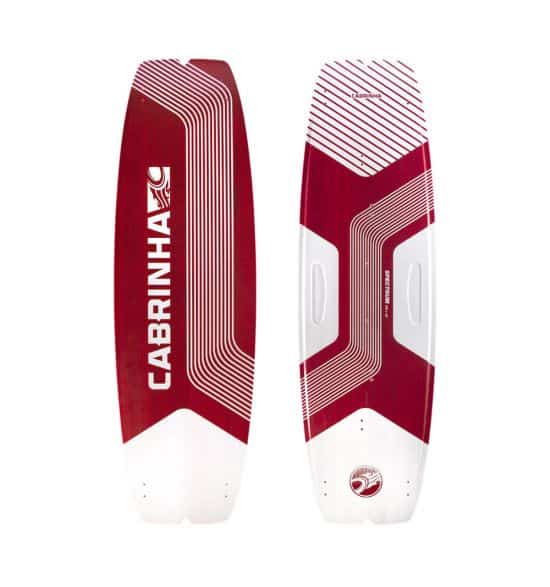
The Cabrinha Spectrum was the board on which I learned to kite. As a beginner friendly freeride board it is used by many kite schools. Since it is produced in various sizes, it is suitable for many beginners and is also often available on used markets.
2. Duotone jaime

The Duotone Jaime is probably the most sold Duotone Freeride Kiteboard. It is very easy to control and is a great board for beginners.
My personal experience to the Kiteboard size with approx. 75 kg body weight
I started out with a 145×45 kiteboard with a body weight of 75 kg and after a safe upwind run, good kite handling and a better feeling for the wind, I quickly changed to a medium-size kiteboard with a 135×41 kiteboard. This meduim-size kiteboard also encouraged me to optimize and internalize the feeling for upwind riding even in less wind. I learned to give edge at the right moment, to let go of the edge and to feel the right posture on the kiteboard.
Don’t linger too long with the easy handling of your first rather big kiteboard! It’s definitely better for your learning curve and development to switch to a smaller kiteboard as soon as possible and continue to develop! Of course this depends on your personal kitesurfing needs and amitions.
Only those who push their limits will develop further. 🙂
Ultimate conclusion to kitesurfing board size guide
You have learned to cruise well on the kiteboard, the kite handling fits quite well and the upwind riding is already working well. Then you switch to a small kiteboard and it only works rather badly than right? This is an adaptation and a new learning phase and can be a bit bumpy. But with a lot of sensitivity everything will be stored in your muscle memory very soon and you will have a lot of fun with your new, smaller, dynamic and agile kiteboard cuts!
If you are not sure which kiteboard best meets your needs, you should try different boards. Just because a kiteboard is shaped for certain conditions doesn’t mean that it will work perfectly for you personally in these conditions. Also the perception of a hard or soft kiteboard is often very individual. A board described as a freeride kiteboard from any brand can feel completely different than the one from another supplier.
As always I am looking forward to your comments. Feel free to write me your questions or suggestions. This video will help you if you are specifically looking for a Twintip board.
